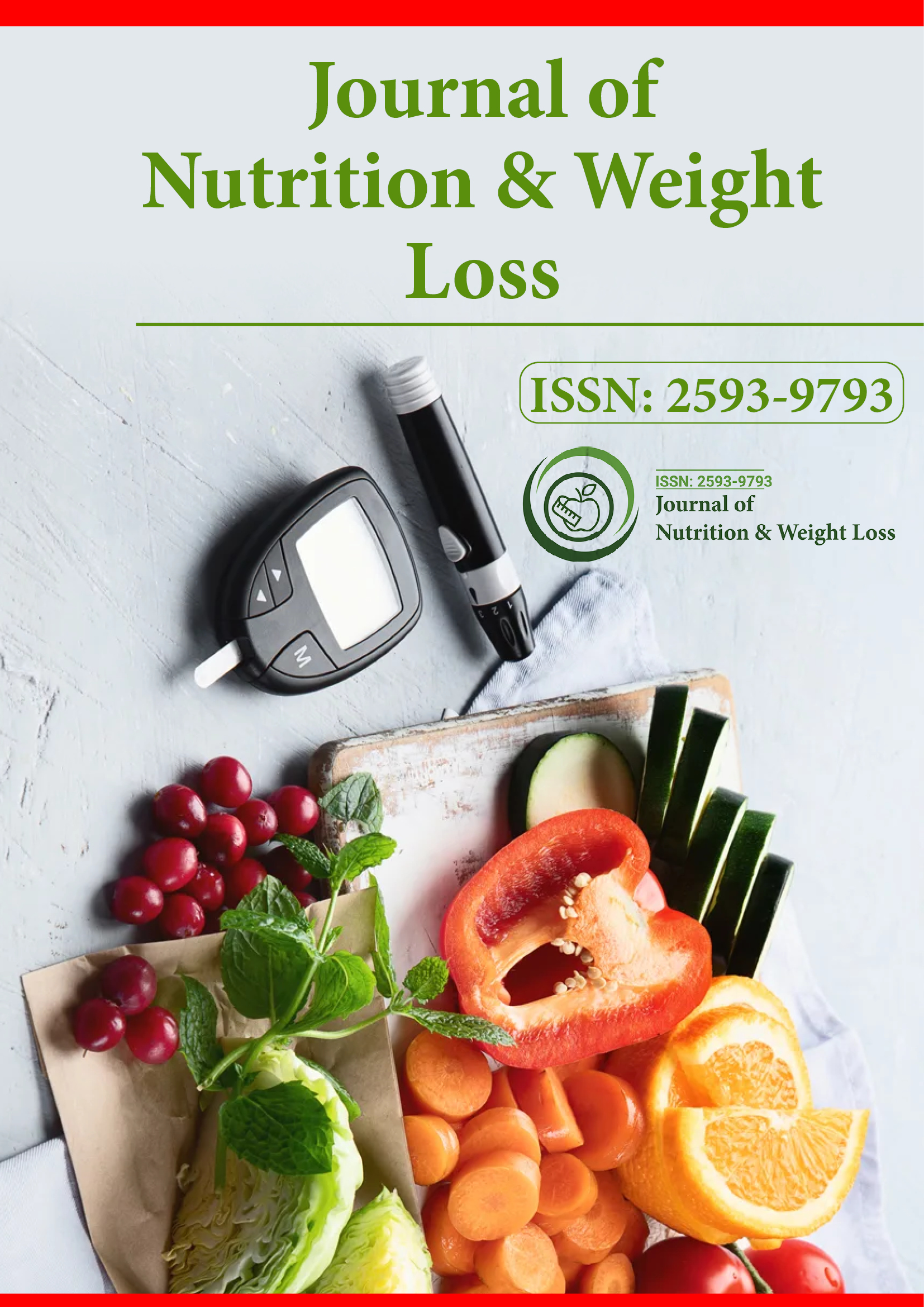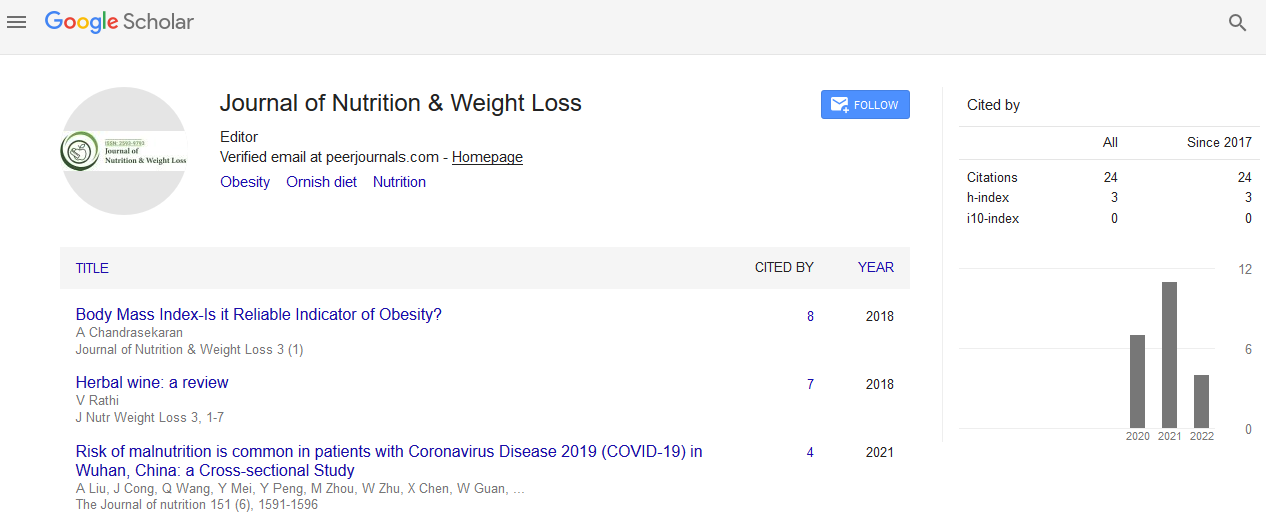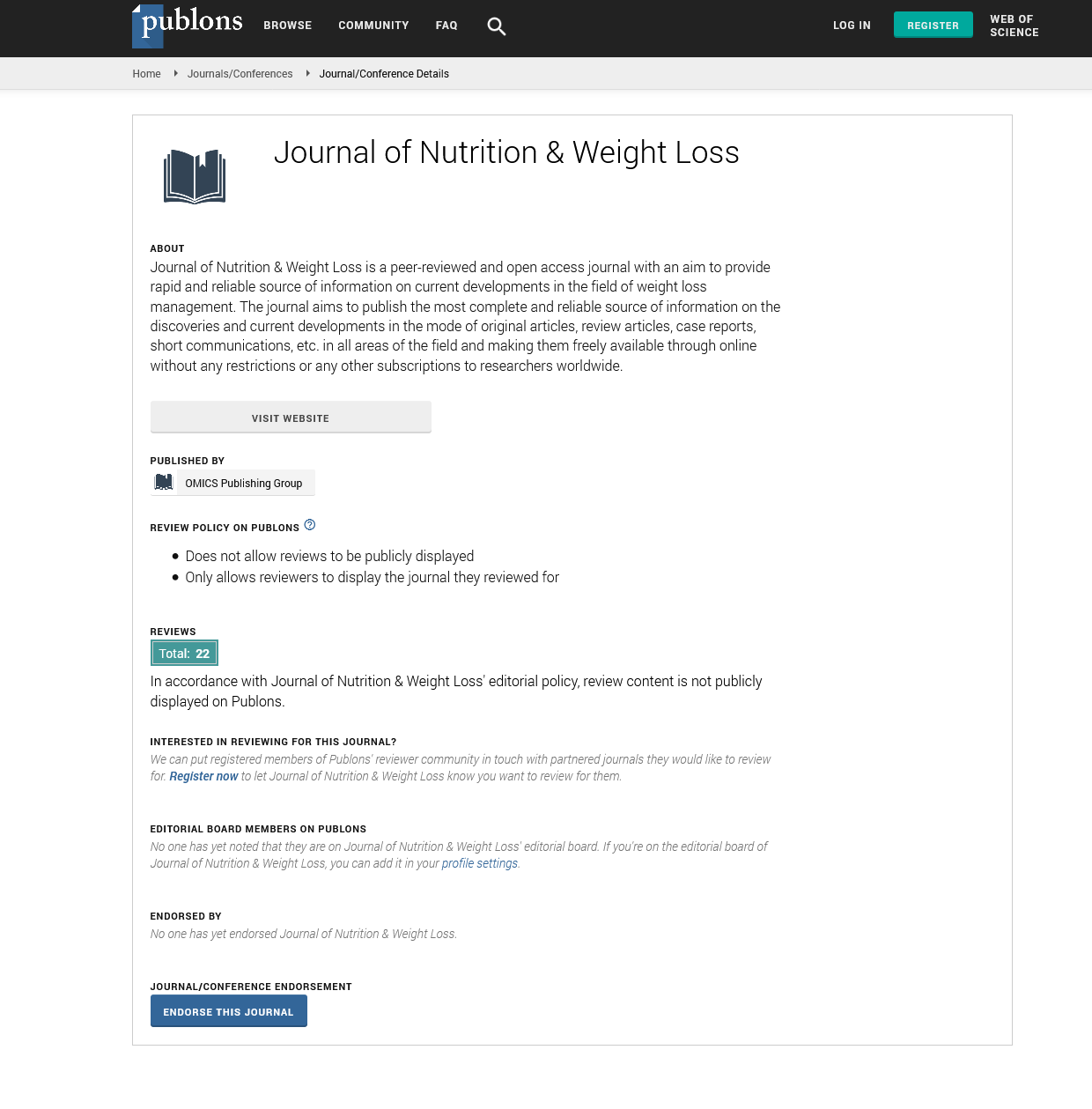Indexed In
- RefSeek
- Hamdard University
- EBSCO A-Z
- Publons
- Euro Pub
- Google Scholar
Useful Links
Share This Page
Journal Flyer

Open Access Journals
- Agri and Aquaculture
- Biochemistry
- Bioinformatics & Systems Biology
- Business & Management
- Chemistry
- Clinical Sciences
- Engineering
- Food & Nutrition
- General Science
- Genetics & Molecular Biology
- Immunology & Microbiology
- Medical Sciences
- Neuroscience & Psychology
- Nursing & Health Care
- Pharmaceutical Sciences
Editorial - (2021) Volume 0, Issue 0
Nutrition for Infants and Children
Nasser Salem Alqahtani*Received: 20-Sep-2021 Published: 30-Sep-2021, DOI: 10.35248/2593-9793.21.s3.139
Editorial
To support healthy growth and development, a child's diet during infancy and childhood must be of high quality and quantity. There are periods of rapid growth and varying nutritional requirements throughout childhood. Children's diets vary rapidly during infancy, ranging from a milk-only diet to the introduction of complementary feeding and, eventually, to a diet that conforms to adult nutritional standards. It is critical to measure and weigh youngsters, as well as document key stages, in order to discover nutritional problems.
The food of a youngster has a direct impact on their growth and development as well as their adult health. Getting enough nutrients minimises the risk of a variety of common paediatric ailments, including anaemia, vitamin D insufficiency, obesity, dental caries, and slow growth. However, obtaining appropriate dietary intakes throughout childhood might be difficult. Low nutrient stores make infants nutritionally vulnerable, especially preterm babies and those with rapid growth and development. Selective eating can develop in pre-schoolers. School-aged children and teenagers may begin to experiment with restricted diets as their independence grows, and they are subject to peer pressure and advertising when making dietary decisions. It is critical that parents receive evidence-based, consistent, and timely information. Parents should get practical nutritional counsel for their children, and children and adolescents should learn how to manage their own health. School-aged children and teenagers may begin to experiment with restricted diets as their independence grows, and they are subject to peer pressure and advertising when making dietary decisions. It is critical that parents receive evidence-based, consistent, and practical dietary guidance in order to help their children, as well as that children and adolescents learn about controlling their health and well-being, including the necessity of making good food choices.
The growth charts for children under the age of five in the United Kingdom were developed from WHO data and are based on growth criteria published in 2006. The Royal College of Paediatrics and Child Health (RCPCH) established the UKeWHO growth charts, which should be used to track the growth of children under the age of four, using WHO growth criteria as well as UK birth and preterm growth data. The RCPCH, the Department of Health (DH), and Healthier Scotland have all accepted UK growth charts 2e18 for tracking the growth of older children. In the first week of life, all neonates should be weighed. If parents request it or if there is a medical reason, babies can be weighed at 6e8 weeks, 12e16 weeks, and 12e13 months, or more frequently if clinically necessary. Infants under the age of two should have their supine length and head circumference measured, while older children should have their standing height assessed. The National Child Measuring Programme (NCMP) measures all children in UK primary schools in Reception (ages 4 to 5) and Year 6 (ages 10 to 11). (See further reading). This programme attempts to identify children who are overweight or obese for their age group so that they can receive help from the National Health Service (NHS). The nutritional needs of adults and children have been reported by the Medical Aspects of Food and Nutrition Committee In 1991, the COMA policy was amended by the Scientific Advisory Committee. In 2011, the South African Committee on Nutrition (SACN) was established. Demands for energy have been lowered for children under the age of ten and increased for children above the age of ten for youngsters who are older. Because of their rapid growth and development, preschool children have significant nutritional needs in relation to their size. Preschool children generally meet nutritional recommendations for their age, according to the National Diet and Nutrition Survey (NDNS), with the exception of a slightly higher intake of non-milk extrinsic sugars (all sugars that are not components of milk, including table sugar, sugars and syrups used in processing, honey, and sugars in fruit juices).
The Department of Education introduced school meal guidelines in 2013, with the following goals: ensuring that food served at school is nutritious and of high quality; promoting excellent nutritional health; protecting individuals who are nutritionally vulnerable; and encouraging good eating habits. The guidelines aim to reduce fat consumption, improve the number and diversity of fruits and vegetables consumed, and limit sugar consumption. Every kid in Reception, Year 1 and Year 2 at state-funded schools will be eligible to free school lunches beginning in 2014.
Citation: Alqahtani NS (2021) Nutrition for Infants and Children. J Nutr Weight Loss. 6:139.
Copyright: © 2021 Alqahtani NS, This is an open-access article distributed under the terms of the Creative Commons Attribution License, which permits unrestricted use, distribution, and reproduction in any medium, provided the original author and source are credited.


